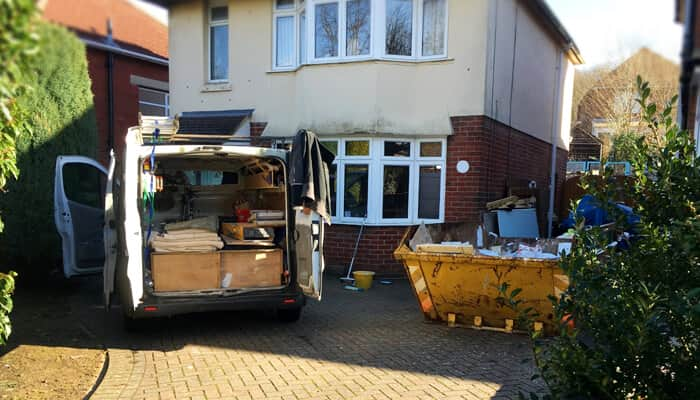Embarking on the bustling roads of London requires more than just a vehicle; it demands the right van tailored to your unique needs. In a city where every turn tells a tale of diverse businesses and services, the demand for reliable and efficient transportation solutions is at an all-time high.
As the heartbeat of the nation’s commerce, London sees a constant ebb and flow of goods, services, and ideas. Whether you’re a budding entrepreneur, a seasoned business owner, or an individual navigating life’s demands, choosing the right van is pivotal. So, let’s delve into the intricacies of van hire, exploring the myriad options available and arming you with the knowledge to make an informed decision.
AT H&H Van Hire, we are your local van hire experts. You can speak to one of us directly to seek expert guidance on van hire or to discuss your requirements. Call 020 7916 6616 or email vans@hhvanhire.co.uk now to get started!
7 best vans available for hire in the UK
-
Small vans
Tailored for the demands of navigating the tight and winding streets of London, small vans excel in urban environments. Their compact size ensures easy manoeuvrability, allowing you to navigate through congested areas and park with ease.
Small vans are ideal for businesses requiring swift deliveries of smaller loads, offering agility and speed. Whether you’re delivering parcels or catering to local services, these vans are a practical choice for short-distance transport.
-
Short wheelbase vans
Short wheelbase vans strike a harmonious balance between a compact design and increased payload space. This makes them versatile for various applications, fitting seamlessly into both urban and suburban landscapes.
Despite the added space, short wheelbase vans retain their manoeuvrability, making them well-suited for businesses that require a bit more capacity without sacrificing the ease of navigating through city streets.
-
Long wheelbase vans
Long wheelbase vans are designed for those with substantial space requirements. The extended space allows for the transport of bulkier goods or larger quantities, making them an optimal choice for businesses dealing with substantial loads.
While offering more space, these vans remain flexible enough to navigate both urban and suburban environments. Whether you’re delivering goods or managing a larger-scale operation, long wheelbase vans provide the versatility needed for various scenarios.
-
Luton box vans
Luton box vans are characterised by their distinctive boxy design, offering a spacious and enclosed payload area. This design is particularly advantageous for protecting goods from the elements during transit.
With their spacious interiors, Luton box vans are well-suited for transporting larger and bulkier items. Businesses that deal with furniture, appliances, or other sizable goods can benefit from the protective and spacious environment these vans provide. Also, if you’re an individual looking for a van to move house, this could be your ideal option.
-
Luton low loader vans
Retaining the benefits of Luton box vans, low loader variants offer the added convenience of a lower deck. This design facilitates easier loading and unloading, especially beneficial for heavy or cumbersome items that may be challenging to lift to a higher platform.
Whether you’re moving house or transporting goods for your business, the lower deck feature of Luton low loader vans adds an extra layer of versatility, ensuring that items can be loaded and unloaded with greater ease.
-
Crew vans
Crew vans are designed to accommodate both passengers and goods, making them an excellent choice for businesses or activities that require teamwork. These vans provide a cohesive solution for transporting both your team and the necessary equipment or goods.
Beyond business applications, crew vans are perfect for group outings or activities that involve transporting a team. Whether it’s a construction crew or a group of event organisers, these vans ensure that everyone and everything can be comfortably transported together.
-
Refrigerator vans
Refrigerator vans are designed to maintain specific temperatures, making them indispensable for businesses dealing with perishable goods. Whether you’re in the food industry or pharmaceuticals, these vans provide the necessary environment to ensure the integrity of temperature-sensitive items.
When transporting items that require a controlled climate, such as fresh produce, dairy, or pharmaceuticals, refrigerator vans offer the assurance that your goods will reach their destination in optimal condition.
Choosing the right vehicle: 9 smart tips & tricks for effective van hire
When embarking on the journey of van hire, selecting the right vehicle is paramount to ensuring a smooth and efficient experience. The diverse array of vans available in the UK market caters to a myriad of needs, but pinpointing the ideal match requires thoughtful consideration. Here are eight comprehensive tips and tricks to guide you towards effective van hire.
-
Assess your needs
Begin by conducting a thorough assessment of your transportation requirements. Consider the nature of your payload, the frequency of use, and the specific conditions of your journeys. This initial step sets the foundation for choosing a van that aligns seamlessly with your needs, preventing unnecessary complications down the road.
-
Consider distance
The distance you intend to cover plays a pivotal role in selecting the right van. If your journeys involve covering significant mileage, prioritising fuel efficiency becomes crucial. Opt for a van that balances power and economy, ensuring cost-effectiveness over the long haul.
Long wheelbase vans are perfect for businesses or individuals engaged in long-distance transport, especially when dealing with bulkier items or larger quantities of goods. If your long-distance travel involves transporting perishable goods or items that require temperature control, a refrigerated van is essential.
Small vans are ideal for covering short distances in the city. Also, short wheelbase vans strike a balance between compact size and increased space. They maintain manoeuvrability whilst offering a bit more capacity compared to small vans.
-
Load accessibility
Efficient loading and unloading can significantly impact the speed and ease of your operations. Assess the accessibility features of different van models, considering factors such as sliding doors, rear door configurations, and interior payload space layout. A van that facilitates streamlined loading processes contributes to overall efficiency.
-
Check vehicle dimensions
Navigating the intricate streets of London demands a keen awareness of a van’s dimensions. Pay close attention to height, width, and overall size, ensuring compatibility with the tight spaces often encountered in urban environments. This precautionary measure prevents potential challenges and ensures a smooth journey through the cityscape.
Small vans are compact and nimble, making them exceptionally well-suited for manoeuvring through tight urban spaces. They are easy to park and navigate in congested areas. If you need more payload space or capacity, go for short wheelbase vans. They maintain manoeuvrability whilst offering a bit more capacity compared to small vans.
-
Special requirements
Determine if your goods or specific business needs warrant a specialised van. For those dealing with temperature-sensitive goods, refrigerated vans provide a controlled environment. On the other hand, if your operations involve transporting a team, a crew van accommodates both passengers and goods or equipment effectively.
-
Review insurance options
Before finalising your van hire, thoroughly review the insurance options available. Comprehensive coverage is essential to safeguard against unforeseen circumstances on the road. Verify the extent of coverage provided by the rental company, ensuring that it aligns with your risk tolerance and business requirements.
Want to learn about van insurance at H&H Van Hire? Check it out here!
-
Verify van condition
A well-maintained van is key to a trouble-free journey. Before committing to a rental, inspect the vehicle thoroughly. Check for any signs of wear and tear, ensuring that all essential components, from the engine to the brakes, are in optimal condition. This proactive approach minimises the risk of mechanical issues during your rental period.
-
Choose a ULEZ-compliant van
In the eco-conscious landscape of London, consider the environmental impact of your van. The Ultra Low Emission Zone (ULEZ) regulations aim to reduce air pollution by encouraging the use of vehicles with lower emissions. Choosing a ULEZ-compliant van not only aligns with sustainability goals but also avoids potential fees associated with non-compliance.
-
Partner with a reliable van hire company
Collaborating with a reputable van hire company significantly streamlines the selection process. Choose a company with a proven track record, such as H&H Van Hire, known for its diverse fleet and commitment to customer satisfaction. Leverage the expertise of the professionals to receive valuable insights and recommendations tailored to your specific needs.
Over to you – choose the perfect van for your needs!
Choosing the right van for your needs is not just a matter of selecting a vehicle; it’s a strategic decision that can significantly impact the success of your endeavours on London roads. As we conclude this guide to effective van hire, it becomes clear that the road to a seamless journey involves a delicate dance between your unique requirements and the features offered by various van models.
Ultimately, partnering with a reliable van hire company adds an invaluable layer of expertise to your decision-making process. The professionals at such reputable establishments not only offer a diverse fleet but also guide you with insights tailored to your specific needs, transforming your journey from a mere commute to a well-thought-out and optimised experience.
Let the trustworthy team at H&H Van Hire help you make the right choice. Tell us what your needs are, where you’ll be driving to, and any doubts or confusion you may have about the process. We’ll take the time to understand your requirements and suggest a van hire that fits your needs at the moment. Contact us now to get started! If you want to book your van online, click here!










